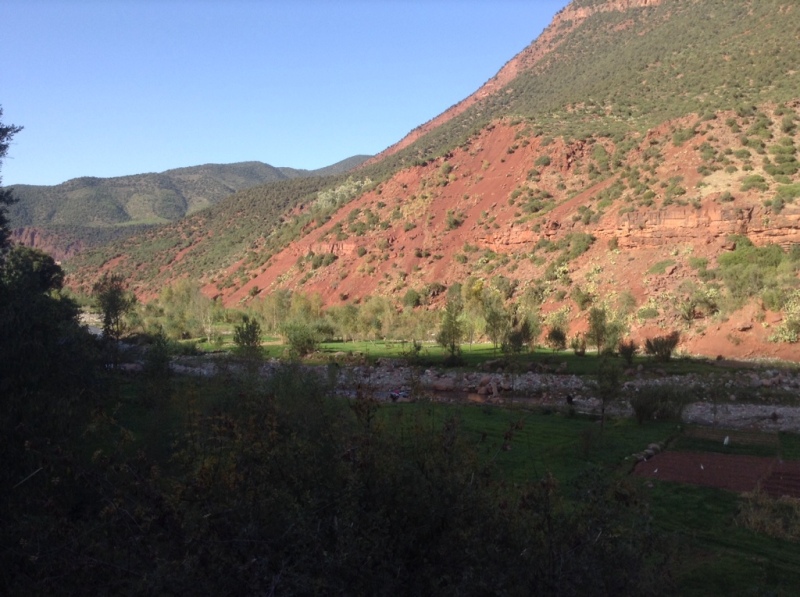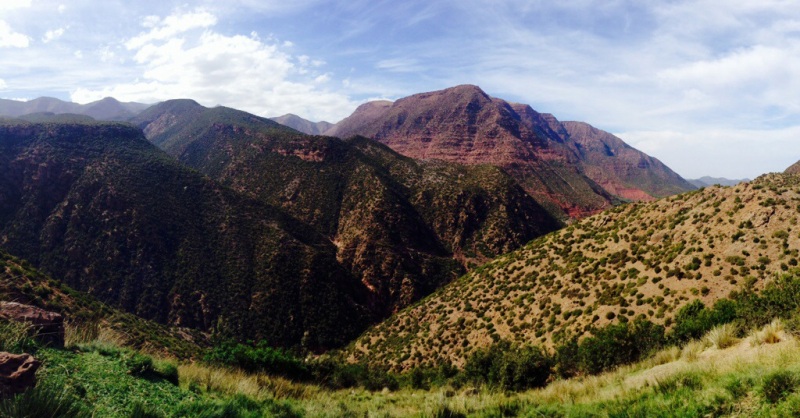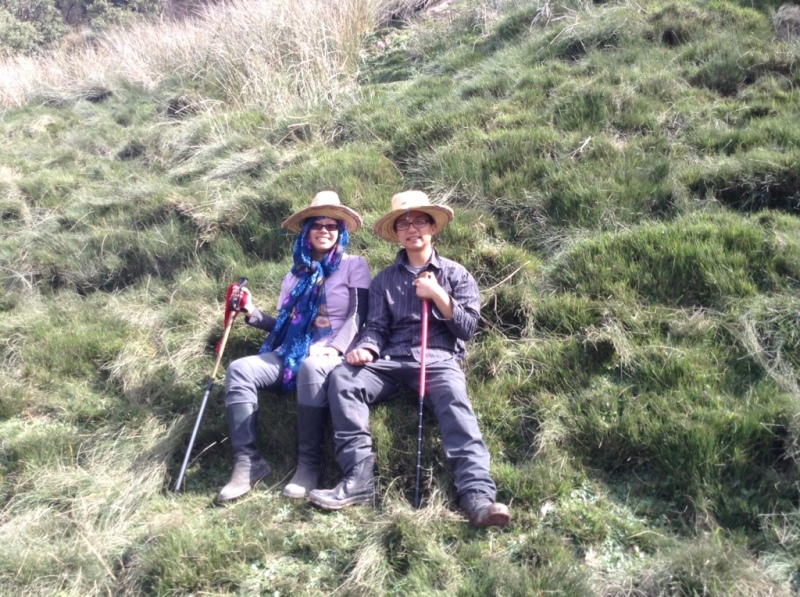by Karen
(Note: finally getting around to posting an old draft! Originally written Oct 2, covering Sept 29 & 30, 2013)
To briefly summarize, we took another Sterna Tour to Iceland’s South Coast (a part of the famous Ring Road).
We saw:
– Seljalandsfoss waterfall (we could walk behind it, or as the Jungle Cruise at Disneyland says, “the backside of water!”)
– The volcano that caused massive flight traffic across Europe in 2010
– Reynisfjara beach (with black sand and basalt columns)
– Skógafoss waterfall & the Skógar Folk Museum
– a giant glacier that we could walk on

Volcanoes in the distance
This time around we had a different tour guide, she was young, and didn’t really interact much with the group, but she knew a lot of history. Although at the very beginning of the tour, she picked up the wrong people from a hotel and drove for an hour before realizing this! We had to drive back towards the city and meet up halfway with another bus that had the other tourists, and made a swap.
Our first stop was the Seljalandfoss waterfall. It looked gorgeous, and it was pretty neat to be able to walk behind it.

The backside of water!
Miraculously the weather was amazing that day. The sky cleared up, and we could see three volcanoes in the distance:
– Hekla, which is Iceland’s main volcano;
– Eyjafjallajökull (I’ll just call her “Eyja”), which threw up so much fine dirt and ash into the sky, it canceled a ton of flights across Europe for days;
– and Katla, still active
We went to a little museum that showed a short documentary about how the Eyja volcano affected farms and families that lived under it, and showed the aftermath of its eruption and the cleanup.

“Eyja”
Reynisfjara Beach was probably my favorite stop of the day, which had black sand beaches and impressive-looking basalt columns and caves. There were also rock formations in the water. Folklore states that the colums were trolls that got caught in the sunlight and turned to stone.

Trolls in the distance…?

Reynisfjara Beach

Basalt Rocks
Once we left the beach, we headed towards a glacier. This was probably the most exciting part of the day, because our driver took our minivan off-roading! I didn’t think the van was properly suited for such driving, but I buckled my seatbelt and threw my hands in the air. After about 15 minutes of driving on rocky terrain, we arrived at our destinaion, and took a short hike to the base of the glacier. There were a few groups already there in their full hiking regalia, but our merry crew was content with just touching the glacier, lest we fall into the cracks and face certain doom.
To be honest, when I think of “glacier,” I usually think of a giant chunk of ice just floating in the water. This glacier was receding into the mountains, slowly carving a valley into the rock. It was also very dirty, and covered in ash and dirt from previous eruptions. Once you brush off the black soot, you are greeted with a bright blue solid layer of ice.

Black glacier
Afterwards we headed towards a folk museum of Icelandic culture, Skógar. The history goes, some guy just randomly started collecting old items one day and eventually hoarded so much that he decided to make his collection into a museum. There were many quirky artifacts and tidbits of history taught inside. For example, I had never known that Iceland was once invaded by Turkish pirates(!!!) and many Icelanders were captured and forced into slavery in parts of the Middle East and northern Africa. The folk museum also had several recreations of old farmhouses, and they looked like Hobbit holes to me.

Old whaling boat

Hobbiton
Near the folk museum was a waterfall, Skógafoss, and you could either hike up to the top, or walk up to its base. We decided to walk to the base of the waterfall and, unsurprisingly, got drenched from head to toe.

Puny waterfall…
On our last day, we decided to take it easy again and just walked around town again. We finally decided to try some whale and puffin meat. We went to this restaurant on the Main Street, and although they only served puffin at dinner time (we got there at 3pm), we were able to convince the waitress to put in an order for us.

Puffin

…and whale
We came across Hallgrimskirkja, a large Lutheran church. Its architecture was inspired by the basalt columns of Reynisfjara. It’s at the top of a hill in Reykjavik, and supposedly has good panoramic views of the city. It looks great at sunset!

Hallgrimskirkja
Afterwards we checked out Sundhöll swimming pool. Not as fancy as the other one we went to, but much closer to our hostel (15 min walk, as opposed to 40), and had pretty much the same facilities. Along with more hot dogs, it was the best way to finish up our final night in Reykjavik!

Hot dogs and beer!
On an added note, we discovered a Filipino-Icelandic restaurant that served only one Asian-related dish.
Iceland, Day 5 Photos
More Iceland Day 5 Photos
Iceland, Day 6 Photos
64.136869
-21.921866
 Surfers!
Surfers! Surfing on a river!
Surfing on a river!
























































































You must be logged in to post a comment.